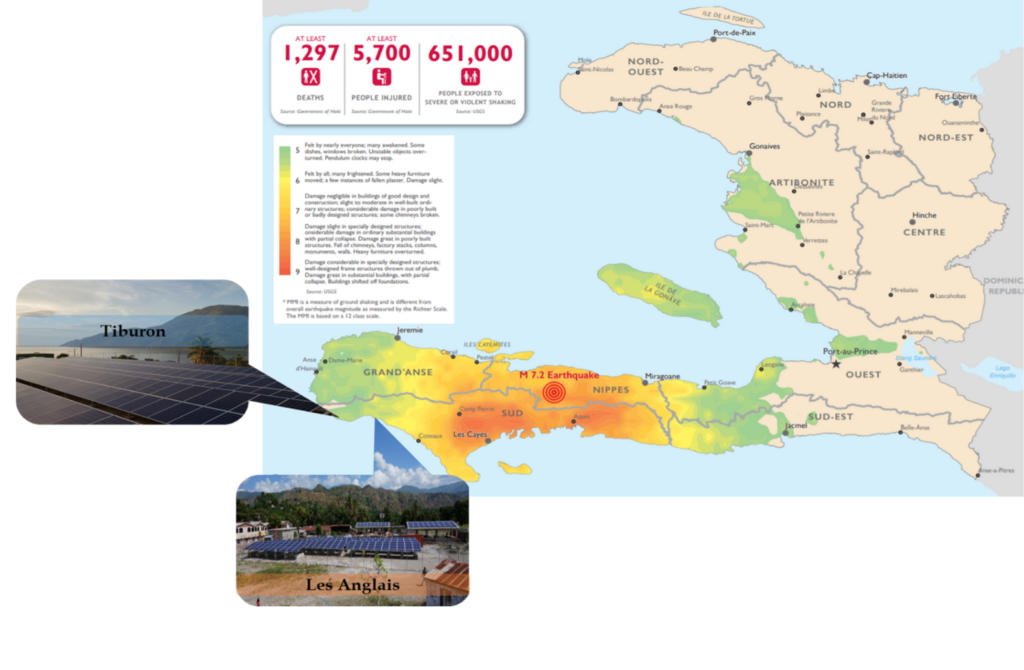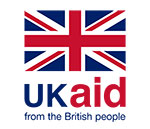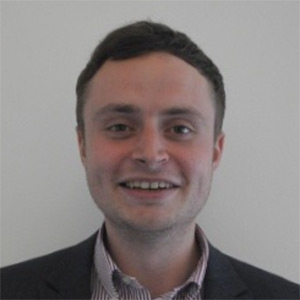In conversation with EarthSpark; Staying flexible in the face of a sudden-onset disaster
Since 2020, EarthSpark International has been a part of our Mobile for Humanitarian (M4H) Innovation Fund Portfolio. The Fund aims to promote innovation in the use of mobile technology to address humanitarian challenges. EarthSpark, working predominantly in Haiti, builds energy-related business models that expand opportunity for people living in hard-to-reach places. Working in Haiti since 2009, EarthSpark began by partnering with organizations in the small town of Les Anglais to develop a supply chain for small household-scale solar lights that could displace kerosene lamps and efficient cookstoves and that could reduce charcoal consumption by both delivering better energy services at a lower overall cost. Shifting its priority to providing higher levels of energy to Haitian communities, in 2012, EarthSpark turned on a first-of-its-kind privately operated pre-pay microgrid in Les Anglais, a small town that had never before had grid electricity.
Utilising an M4H Innovation Fund grant, awarded in 2019, EarthSpark’s project was designed to develop mobile-enabled innovations to bolster EarthSpark’s climate adaptation activities as the team works to scale community resilient energy access across rural Haiti.
Since the start of the grant in March 2020, it’s fair to say that a lot has happened in Haiti. The Covid 19 Pandemic, alongside significant political instability and several natural hazard disasters, has made Haiti an increasingly challenging environment to work in, increasing the need for EarthSpark to be adaptive and flexible in their planning. To discuss the project, and how EarthSpark has responded to changes in Haiti, I sat down with Allison Archambault, President of EarthSpark and Andy Bilich, Project and Data Manager, to dive deeper into some of the details.
Q: Let’s discuss your original project under the M4H Grant – what were the project’s original intentions?
The original project objectives were threefold:
- Expanding energy access and improving resiliency for climate vulnerable communities in Southern Haiti by building out two additional solar microgrids (and pre-development for an additional four microgrids) to provide clean, reliable, and affordable power for households and businesses;
- Developing mobile-enabled and digital solutions including integrating bulk SMS outreach, driving mobile money adoption for energy, helping people learn about their energy consumption through digital kiosks and literacy campaigns, and developing learnings about how clean energy can mitigate the risk of displacement due to climate shocks.
- Position EarthSpark to unlock further scale up funding to expand the development of microgrids across Haiti
Q: What impact did the Earthquake of August 2021 have in Haiti? What impact did this have on EarthSpark?
On August 14, 2021 Haiti’s Southern Peninsula was hit with a magnitude 7.2 earthquake which caused thousands of deaths and tens of thousands of individuals to be displaced or isolated as buildings, bridges, and other infrastructure collapsed in communities across Southern Haiti.

Source: USAID (with EarthSpark additions for microgrids)
Critical community services and infrastructure like telecommunications, and particularly health clinics and hospitals were directly impacted by the earthquake itself and then further limited by massively constrained supply chains and near-impossible logistics for things like diesel fuel for their generators. Most facilities lost power and/or had to alter or curtail service providing a grim reminder of the need for strong resilient local power systems and infrastructure to support communities in Haiti.
EarthSpark’s existing microgrid communities in Les Anglais and Tiburon were impacted, but fared better than other towns in the region. Even still, the iconic church in Les Anglais collapsed, crushing many who had been inside preparing for a baptism. Others were injured as the concrete walls and ceilings of homes and businesses fell. Aftershocks are still occurring even now. Unable to feel safe indoors, people resorted to sleeping outside, and continued to do so for months following. The towns’ healthcare facilities, which lacked basic supplies before the earthquake, were inundated struggled to meet the enormous need for care.
Following the earthquake, our team de-energized the grid in Les Anglais for three hours to run safety checks, and then we were able to turn everything back on. In Tiburon, service never stopped. After the initial safety checks for the grids and the team, EarthSpark personnel in Les Anglais were helping ad-hoc, turning the truck into an ambulance, a hearse; translating for emergency medical providers; coordinating air lift patients; advocating for relief services and supplies to reach the town of Les Anglais; installing new lights in an ad-hoc outdoor treatment area for the health clinic; in short supporting our team and community the best we could.
Q: What led you to change the direction of your project? What changes did you make?
EarthSpark is working to expand microgrids and the life-changing benefits of electricity access to dozens more towns across rural Haiti. At the same time, we have a responsibility to ensure that our existing microgrids are robust, resilient, and responsive to the needs of the communities we already serve. The earthquake made that responsibility all the more salient.
Being able to continue powering Les Anglais and Tiburon through the earthquake and the aftermath is a case in point of the value of microgrids and distributed renewable energy. While other electricity systems in the region failed, ours stayed on.
We have very well-built grids, but we were also lucky. If there had been more extensive damage, the grids could have been offline for longer, which would have hindered response and recovery efforts. For our team, the earthquake really demonstrated how important it was to further harden energy supply for critical community services like telecommunications, healthcare, and local government to ensure continuity of service even if the main microgrid were to suffer damage.
For example, in Tiburon, the small health dispensary “Dispensaire Roger Paradis” saw its independent power system go dark the day of the earthquake, likely because the quake shook components, that, already-old, were nearing the end of their use – leaving them without reliable power for months. EarthSpark had not previously served the clinic, but when our team got a call for help from the site director, we were able to step in, repurpose an inverter from our operations, and get power flowing again at the clinic. This stopgap measure showcased even further how that we really needed a focused, robust plan for sustainably delivering energy services to healthcare facilities within our plan for community electrification. Previously we had considered this too financially risky for the viability of the microgrid model, but after the earthquake we felt it was essential for us to find a way to make it work.
So, following the earthquake EarthSpark was able to work with GSMA to pivot the project from developing new microgrids to focus instead on deploying distributed energy solutions and expanding service in existing microgrids, including to the primary healthcare facilities in Les Anglais and Tiburon.
Q: How important is it to be flexible when facing a humanitarian crisis?
It really can’t be overstated how important it is to be flexible, adaptive, and responsive in crisis situations. Crises acutely highlight vulnerabilities and showcase priorities for action and response. The GSMA was really wonderful on this point, helping us pivot and focus on what was actually most needed not on what had previously been written up in our grant proposal.
As described above, the earthquake highlighted priority needs for our microgrid communities. Thinking generally about earthquake preparedness, of course a first priority would be better building standards and construction materials. But the vulnerability of healthcare, telecommunications, and local government services was very apparent for EarthSpark (and more within our direct ability to address). This vulnerability grew ever more salient as recovery efforts continued in the South and stories of logistics, communications, and healthcare power shortages became daily nightmares for communities and for humanitarian response. So being able to flexibly adapt the project’s efforts to respond to these needs proactively in our communities was critical.
Beyond the acute crisis situations, it is also important to take this flexible and responsive mindset for working in complicated environments in general. Haiti unfortunately has seen more than its fair share of disruption events over the past few years – from COVID19, social unrest and fuel shortages to political upheaval from the presidential assassination. Further, an extremely low ‘ease of doing business’ ranking and regulatory environment only beginning to take shape for community microgrids both add additional complexity and additional challenges.
As with the earthquake response, it is crucial that EarthSpark’s microgrids are providing a measure of resiliency and stability to our host communities while our team is also working proactively to address vulnerabilities and opportunities highlighted by the disruptions. For example, we are moving to 100% renewable energy powered grids to avoid exposure to vulnerable diesel supply chains, and we are expanding microgrid services in our existing microgrids as we await the green light from the government microgrid concession process to expand new microgrid service to new towns.
Innovation and progress are rarely straight lines, and our team is thrilled to be partnering with some phenomenal community leaders, government officials, local entrepreneurs and international funders to truly innovate towards reliable electricity and expanded opportunity at scale in rural Haiti.
Q: What were the results of your project changes and what did this flexibility enable you to achieve?
Ultimately this partnership with GSMA delivered significant impact for the microgrid communities in Southern Haiti and also sprouted critical learnings, innovation, and field-validation for new aspects of EarthSpark’s solar microgrid model as we plan to scale-up. Concretely, the work delivered:
- Improved energy access for households and businesses – The project expanded microgrid service to an additional 200 households and small businesses in EarthSpark’s existing microgrids in Les Anglais and Tiburon providing clean, reliable, and affordable energy access for about 1000 additional people.
- Improved resiliency of healthcare facilities – Following the August earthquake, EarthSpark’s microgrids are now providing clean, reliable power to the health clinic in Tiburon and the hospital in Les Anglais. This marked EarthSpark’s first time directly serving healthcare facilities with its solar microgrids and has laid a foundation to work with healthcare facilities in other communities.
- First deployment of distributed solar + storage solutions in EarthSpark microgrids –EarthSpark installed a 16.2 kWp / 77 kWh solar + battery storage system directly on the Tiburon health clinic to provide grid-connected on-site power. In the event of a future sudden-onset disaster that might damage the microgrid’s poles-and-wires distribution network, the system at the health facility will be able to switch into ‘island mode’ to continue powering the clinic as well as the neighbouring telecommunications tower. This was the first interconnection of a truly distributed solar+storage solution within EarthSpark’s solar microgrids. Shifting to a distributed solar+storage grid topography has exciting implications for how microgrids can be designed, built, and operated.
- Reliable power for telecommunications and improved financial viability for the microgrid model – EarthSpark was also able to connect a total of three telecommunications towers in partnership with the national providers, Digicel and Natcom, across the Les Anglais and Tiburon microgrids. This not only improved the reliability of the telecommunications services in the microgrid communities but also improved the financial viability of the microgrid model by creating large and steady additional customers for the grids.
- Integrated Mobile Money into microgrid operations – Through Digicel’s MonCash, microgrid customers are now able to buy electricity credits conveniently from anywhere via their smartphone
- Improved data access and visibility for customers – EarthSpark developed an iPhone / Android smart-phone app and digital kiosk to allow customers direct visibility into their electricity consumption and transactions data as well as access to important information on the microgrid and their electricity service
- SMS outreach platform and energy literacy – EarthSpark worked with Digicel to utilize their SMS outreach platform to conduct a small energy literacy campaign focused on electricity safety, energy efficiency, and the new mobile solutions. As EarthSpark expands, the SMS platform will enable easier entry into and communications with new microgrid communities.
In the end, being flexible and responsive to the needs of the microgrid host communities improved the impact of the project by tailoring specific solutions to support short-term recovery and future resiliency for current and planned grids. Further, shifting from developing new grids to deploying distributed solutions and expanding service in existing grids allowed the project to avoid difficult regulatory barriers and work within existing operating licenses.
Q: Who have you been able to reach as a result of the work done?
The Les Anglais and Tiburon communities where the project was focused are located in some of the poorest communes in rural Haiti (approximately 75% below the national poverty line[1]). The World Bank estimates that households[2] in the region spend an average of 10.66 USD – 20.78 USD per month for energy alternatives. By providing new energy access to 200 households and small businesses, the project was able to drive an estimated 50-93% savings on energy expenditures (depending on service level) for those customers.
Further, in supporting critical healthcare and telecommunications services with reliable power and shifting them away from reliance on vulnerable diesel supply chains, the project also improved the resiliency of the Tiburon and Les Anglais communities as a whole, particularly to disruption from natural disasters like earthquakes and hurricanes or events caused by political instability, fuel shortages, and ultimately climate change, which are unfortunately all too common in Haiti.
Q: What will be the long term impact of this work? What are the next steps for this project, and what are the opportunities for scaling?
The project successes, particularly the field validation of interconnected distributed energy solutions, powering new critical customers like telecommunications and healthcare, as well as the suite of mobile and digital solutions all help to improve the social impact, customer satisfaction, and financial viability of EarthSpark’s solar microgrid model and will be directly integrated into EarthSpark’s broader scale up plans for microgrids in Haiti.
EarthSpark, through its microgrid development company, Participant Power, is leading a microgrid expansion project that will bring reliable grid electricity to ~84,000 people throughout rural Haiti in the next 5 years. The new grids will be powered by 100% solar energy and will deliver reliable 24/7 electricity with new infrastructure in more than two dozen towns. The blended finance project has the backing of the Green Climate Fund, and has so far secured provisional approval for 22 concessions from the Haitian government.
EarthSpark is currently looking for partners to join in the blended finance project for microgrid scale-up and expansion, but is also looking for partners for other projects and research related to things like integrated electrification, appliance financing, electric cooking, and powering livelihoods that will provide foundational evidence and innovation to support the broader expansion efforts as this current collaboration with GSMA so successfully has. One especially important area of focus for us right now is food security and how microgrids can support food preservation from local food production. The war in Ukraine is about to exacerbate an already acute food crisis in Haiti, and people from every sector need to be doing all we can to address this. There are a lot of rather simple technologies – from crop dryers to vented silos to basic freezers and refrigerators — that can help reduce the significant spoilage of locally produced foods to help bolster local incomes and local food security.
The M4H-EarthSpark International project is in its final stages, and we look forward to sharing more lessons from the project in the near future. To learn more about the M4H Innovation Fund and the organisations we are working alongside, you can visit our interactive map detailing all of our grantees or download the M4H Innovation Fund Portfolio (2017-2022).
[1] IADB “Estimating and Forecasting Income Poverty and Inequality in Haiti Using Satellite Imagery and Mobile Phone Data” (2020); Available here.
[2] World Bank SREP Investment Plan for Haiti, 2015, Available here.



